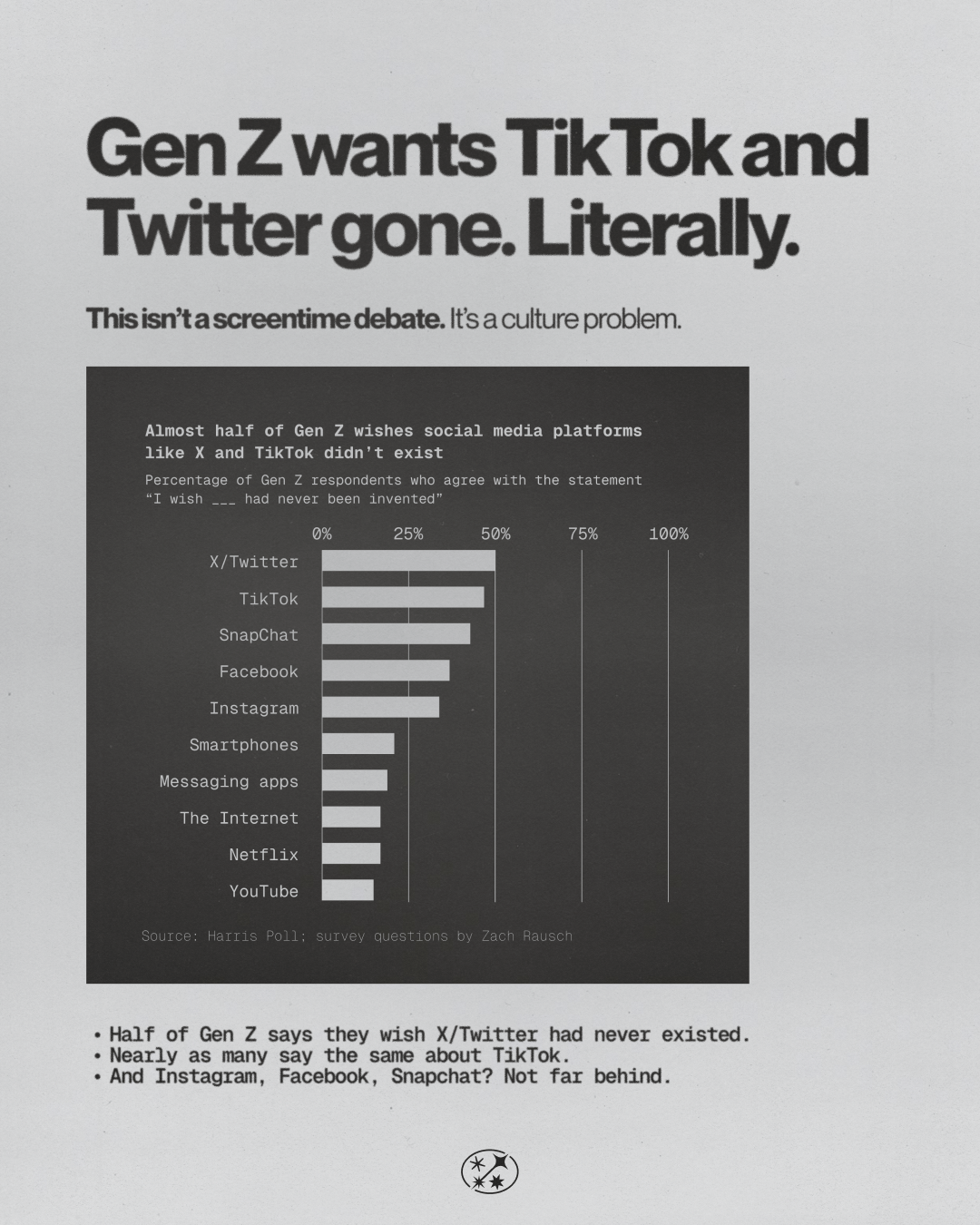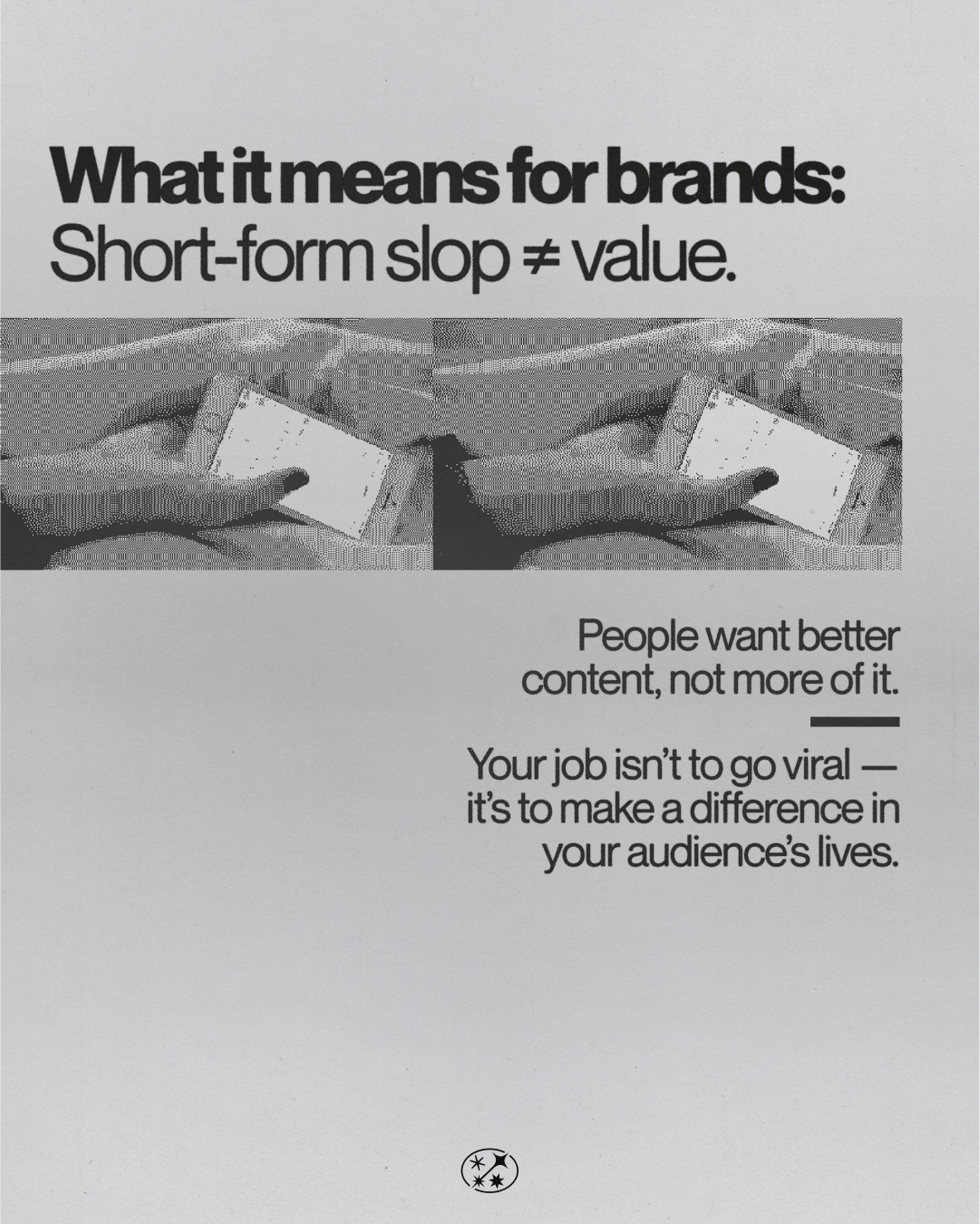Digital Detox: The New Challenge for Marketers
Get weekly strategy insights by our best humans

“AI-powered, data-driven marketing will enable hyper-segmentation and personalized experiences at every touchpoint,” observed Allianz’s CMO in our recent interview. Her next thought carried a warning: Will we see a massive digital detox among certain audiences? Could that force us to rethink experiences that go beyond the digital? In other words, even as marketers push deeper into hyper-personalized digital engagement, consumers may push back by unplugging en masse. This paradox – cutting-edge personalization versus the craving to disconnect – sets the stage for one of today’s biggest marketing challenges. Marketers must grapple with a digitally fatigued public that is increasingly protective of its attention and well-being.
In our last trend memo, we highlighted growing consumer exhaustion due to social media saturation and endless screen time. The signs of digital fatigue are everywhere, from viral documentaries about social media’s toll on mental health to people deleting apps in search of peace.
This context is crucial for understanding why a wave of “digital detox” behavior is on the rise – and why it has marketers on alert. Welcome back to The Current Thing.
Social Media Burnout and the Search for Quiet
Consumers are clearly craving a break. Social media burnout is spreading; people are openly talking about being “done” with the algorithm-driven rabbit holes of Instagram, TikTok, and Facebook. What started as subtle signs – a friend announcing a week off social media, or a teenager uninstalling TikTok during exams – has grown into a broader movement of mindfulness. Many users feel overstimulated and manipulated by the torrent of content and advertising in their feeds. As one industry observer put it, “Growing numbers of people are looking for a more conscious way to consume media and trying to reduce their screen time.” Instead of feeling inspired, users are left exhausted by the barrage of push notifications and “buy now” prompts.
This backlash against digital overload is fueling new behaviors that would have seemed odd a few years ago. Case in point: some young people are literally hiding from their devices – often in the one place no one will bother them.

Gen Z’s “Bathroom Camping” – A Sign of Overstimulation
One of the more eye-opening trends to emerge from Gen Z is something called “bathroom camping.” It’s exactly what it sounds like: stressed-out young adults locking themselves in a bathroom for extended periods, not for hygiene or crying, but just to exist in quiet solitude. This viral TikTok trend has taken off as a DIY therapy for overstimulation. By retreating to the restroom, Gen Z’ers say they can “reset their nervous systems, escape overstimulation, and reclaim a few minutes (or hours) of unbothered solitude.” In essence, the bathroom becomes an emotional bunker – a rare space with a locked door and no digital distractions.
Gen Z Leads the Screen-Time Rebellion
These anecdotes align with hard data: Gen Z is leading a deliberate pullback from screen time. A recent global survey by ExpressVPN found that 46% of Gen Z respondents are actively taking steps to limit their time online.
Crucially, Gen Z’s motive isn’t Luddism; it’s mental health. By limiting screen time, young people hope to reduce stress and reclaim balance. In fact, 39% of millennials (not far behind Gen Z) say they’ve reduced their screen time specifically to improve their mental health, and 30% to lower their anxiety and stress levels.
The key insight for marketers is that young consumers are actively striking a new balance. They want the benefits of connectivity without the constant noise. They’re pruning their digital diets – uninstalling apps, scheduling phone-free hours, and yes, even “camping” in bathrooms – to regain control. This sets the stage for a world in which engagement is more intentional and attention is an increasingly scarce (and precious) commodity for brands.
Digital Detox Goes Mainstream: From Trend to Luxury Travel
What started as personal screen-time limits is now a full-blown lifestyle shift: digital detoxing has gone aspirational. And nowhere is that clearer than in the travel and hospitality world.
According to Hilton’s 2025 Global Trends Report:
- 27% of travelers now plan to reduce or shut off social media on vacation
- 17% actively seek out trips that force disconnection—like no-Wi-Fi stays or retreats that lock up your phone at check-in.
In fact, there’s a rise in high-end resorts offering “digital detox packages,” where guests are encouraged—or required—to unplug. Some vacation rental platforms report a 17% spike in searches for no-internet properties, with clients filtering specifically for off-grid options.
Even Vogue declared “being offline the latest luxury.” Its June 2025 feature highlighted a 50% surge in search interest for digital detox retreats, and called complete unreachability “the ultimate power move.” From phone-free meditation gardens to “digital concierge” services, the luxury segment embraces analog experiences as premium offerings.
New Tech to Help You Disconnect (Yes, Really)
It may sound ironic, but the tech industry is starting to deliver tools for less tech usage. Digital wellness apps and minimalist gadgets have been around for a few years (think of meditation apps or the “Light Phone” that only calls and texts). Still, now even big-name innovators are entering the fray with products that facilitate disconnection. One fascinating example is BitChat, a new messaging app created by Twitter co-founder Jack Dorsey. BitChat is designed for the hyper-digital age’s worst moments – when you want to communicate without actually being online.
How is that possible? BitChat works without the internet. It uses Bluetooth and a decentralized mesh network to link nearby phones directly, no cell towers or servers required. In essence, it lets you send messages off-grid – the messages even disappear by default – and you don’t need a phone number or email to use it.
While BitChat is still in early testing, Dorsey’s bet is that a segment of users will embrace a privacy-first, server-free communication tool in an era of constant connectivity. It’s a way to stay in touch with your local network (say, friends at a festival or classmates on campus) while opting out of the internet at large.
For marketers in tech, this is a noteworthy development: features that encourage less engagement can actually be selling points now. Consumers (especially younger ones) increasingly value brands that respect their time and privacy.
A messaging app that doesn’t addict you with infinite scroll, or a social platform that encourages periodic log-offs, might sound counterintuitive business-wise – but it can build trust and differentiate in a crowded market. The tech companies that thrive may be those that help users use their products in healthier, more controlled ways. In a sense, facilitating periodic disconnection could become a hallmark of responsible innovation.
Marketing in the Age of Digital Detox: 10 Actionables to Stay Relevant When People Are Tuning Out
As more people mute notifications, delete apps, and set screen-time limits, marketers face a new kind of challenge: how do you reach an audience that’s intentionally trying to disconnect?
The old playbook—flood every channel, push endless promos, stay top-of-feed—just doesn’t land the same way anymore. Pop-ups, push messages, and hyper-targeted ads are increasingly seen as part of the problem. Many users feel overwhelmed rather than engaged, which leads them to install ad blockers, turn off alerts, or simply log off. In this context, less can actually be more.
Here are a few shifts worth making:
1. Focus on pull, not push. Instead of chasing attention, earn it. Prioritize content that informs, inspires, or offers real value. Think slow-burning insights, not dopamine-triggering clickbait. People will engage with things that feel genuinely useful or entertaining—on their own terms.
2. Be more selective about where and how you show up. Quality beats quantity. A well-timed, thoughtful email or beautifully made article will outperform five generic posts or ads. Especially now, when attention is limited, each touchpoint has to feel intentional.
3. Design for presence, not pressure. Experiential marketing can thrive in this climate. Workshops, pop-ups, or curated events—especially ones that encourage people to be present, even offline—create moments of connection that are remembered (and often shared, organically).
4. Build in breathing room. In product and content design, offer natural pause points. Encourage people to take breaks. A surprising number of users will trust you more for not demanding all their time.
5. Rethink your tone around data. If people are detoxing because they feel watched or manipulated, privacy becomes a brand value. Be transparent. Skip the creepy retargeting. Tell people what you won’t do with their data. That builds loyalty.
6. Respect the inbox. Email is having a quiet renaissance. It’s algorithm-free, and people engage with it on their schedule. But only if you don’t abuse the privilege—send less, and make it count.
7. Look beyond the algorithm. Platforms like Reddit, Discord, or Substack foster intentional communities. These spaces may not be ad-driven, but they’re high-signal environments for brands willing to contribute, not just broadcast.
8. Explore new collaborations. There’s room for creativity here. Imagine a tech brand teaming up with a wellness company to launch a phone-free retreat, or a challenge that encourages mindful use of their product. It sends a strong message: “We’re not here to steal your time. We’re here when it matters.”
9. Rethink Product and Interface Design: With consumers valuing calm tech, designers may adopt principles of calm design and slow tech. This could mean devices with fewer features or modes that strip away distractions. (We already see minimalistic phones, but what if mainstream phones had an “essentials only” mode for off-hours?) Apps might introduce interfaces that encourage periodic stopping points rather than infinite scrolls. Color palettes, typography, and haptic feedback could be used deliberately to soothe rather than stimulate.
10. Brand Experience and Community: Brands may find new ways to engage consumers offline and in more intimate, human settings. We might see a resurgence of analog marketing channels – for example, beautifully printed zines or catalogs that consumers can read in a quiet moment, or direct mail that feels personal and artful.

Adapting the Marketing Playbook: Channels of Impact and Opportunity
Finally, marketers must consider which of their beloved channels and tactics are most vulnerable in this great digital dial-down. If attention is moving target, then so is the effectiveness of various marketing channels. Which channels might lose ground, and where should marketers refocus?
Social media marketing is an obvious first area of impact. As audiences spend less time scrolling, platforms like Instagram, TikTok, and Facebook could deliver fewer impressions and less ROI per dollar spent.
If trends continue, brands that rely heavily on snappy TikTok videos or Instagram stories to reach young consumers may find diminishing returns. This doesn’t mean video marketing or visual storytelling will die – far from it. But it does suggest that short-form viral content might not be the silver bullet if people are consciously avoiding habitual scrolling.
Marketers may need to diversify into content that can be discovered in more intentional ways (for instance, via search or through communities) rather than hoping to catch a harried thumb mid-scroll. We could also see a shift back toward influencer blogs, podcasts, or YouTube series – formats that audiences engage when they choose to, not endless algorithmic feeds. These allow for deeper storytelling and can be consumed in “quality time” (like listening to a favorite podcast during a commute) as opposed to being mindless filler.
Another area to watch is paid advertising on highly stimulating platforms. If users set their own boundaries – say, no phone after 9pm, or social apps only on weekends – that restricts the windows when ads can reach them. Traditional channels that are less intrusive might hold steadier: for example, email marketing or even SEO-driven content might benefit as people search for what they need rather than passively consuming ads.
On one hand, SEO (Search Engine Optimization) is one of the more intent-driven channels – you search when you need something, and it doesn’t necessarily suck you into hours of unsolicited browsing. This makes search a relatively “low cognitive load” way to get information, which could appeal to detoxing consumers. On the other hand, the very nature of search is evolving in the face of AI. Enter AEO – Answer Engine Optimization. Some users may skip the traditional search results page entirely.
In summary, marketing channels will need a recalibration. Expect a bit of a pendulum swing: less obsessive focus on chasing virality on every new platform, and more emphasis on solid, discoverable content.
Want to Make Your Brand Resonate in a Culture that’s Tuning Out?
At Postdigitalist, we work with companies who understand that marketing today isn’t just about reach—it’s about relevance, restraint, and cultural timing. We help brands decode emerging behaviors, design smarter strategies, and show up meaningfully in a world where attention is no longer a given.
Whether you're navigating digital fatigue, rethinking your content strategy, or wondering how your marketing holds up in a post-SEO landscape, we’ve got you. Our tools are designed for teams who want to listen before they publish—and who see brand as infrastructure, not decoration.
Explore what’s next with us:
- Download our Trend Memos to stay ahead of cultural shifts.
- Book a free AEO audit and see how your brand performs in answer-driven search.
- Or book a free workshop to explore how our strategy sprints can help you reposition with focus and cultural intelligence. Only 4 spots are available every month.
If you’re ready to stop chasing clicks and start building real relevance—let’s talk.

